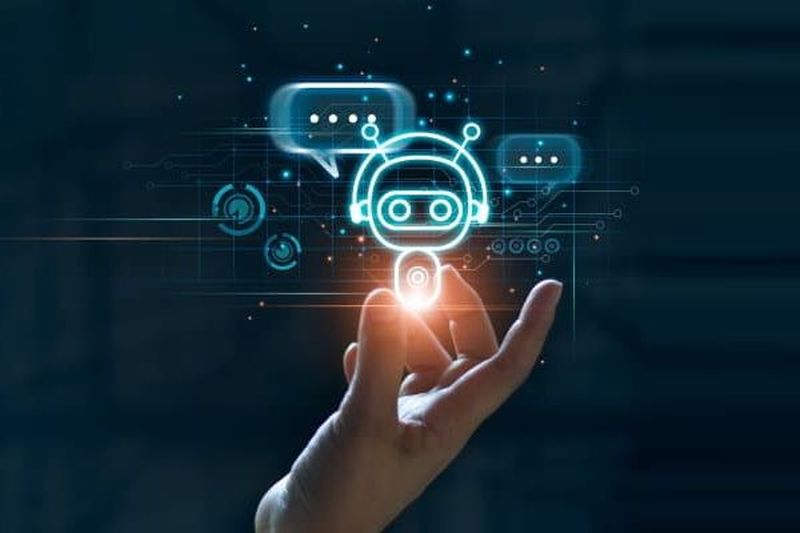Impact-Site-Verification: 3a537909-5ee6-4b05-8ad7-902ef56a51be
With the potential to improve the efficiency of internal operations and customer service, chatbot technology is increasingly high on the corporate agenda.
Impact-Site-Verification: 9fff8018-2a90-4003-9484-46fa7a2d8872
The use of chatbots for internal tasks and customer service has become increasingly relevant for many large enterprises and SMBs, driven in part by the increased adoption and acceleration of generative AI since OpenAI publicly released ChatGPT in November 2022. However, the history of chatbot development dates back to 1960s and shows their gradual evolution over decades in accordance with the development of computing technology and the Internet.
While the development and deployment of chatbots on business websites, typically to answer individual customer queries, has become commonplace, widespread investment in generative AI has opened a new avenue for innovation. This has led to the emergence of search bots in the browser, digital assistants in office software, and third-party APIs.
Below we take a look at how chatbot innovation has evolved and what its future might look like.
Chatbot history
The first chatbot, ELIZA, was developed in 1966 at the Massachusetts Institute of Technology. ELIZA, the mother of all chatbots, answered very simple questions using a decision tree.
Subsequently, this first iteration of the chatbot naturally evolved and developed. IN 1980s And 1990s this technology was used in automated telephone systems using very simple decision trees. Subsequently, chatbot technology became widespread in social and business channels.
Why are we so interested in it right now? Why is this technology receiving so much attention?
Howard Pull gives three main reasons:
- Applications such as instant messengers and voice assistants are inducers of bots. Developers of famous messaging apps like WhatsApp and the like have opened up their APIs, and brands can now launch and create digital services that do everything from product recommendations, booking and service, to answering frequently asked questions (FAQs).
- Changing capabilities. There have been changes in the perceptual ability of chatbots; they began to recognize images and voice, which made it possible to search through images.
- Development of artificial intelligence. There was finally a shift in learning. The ability to appear human and have more human-like conversations has undergone significant changes in terms of AI and machine learning that underpin the chatbot. This allows brands and services to create experiences that feel human and interact in the way people expect to be spoken to and communicated with.
Misconceptions about chatbots
Throughout the history of chatbots, there have been misconceptions about their capabilities. Consumers expect a bot to be able to answer open-ended questions. However, this is not always the case – and many have experienced this – and it can be frustrating.
The quality of chatbots highly depends on how much a brand has invested in them from a technological and operational point of view.
“I think the number one misconception is the assumption that a chatbot’s role is to communicate,” Pull says. “In fact, his goal is to solve the problem, to provide a service, and in the shortest possible time.”
It’s not about replacing people, but about finding new areas and new ways to interact with consumers. And the better the bot, the more chances a brand has to attract and retain its audience.
It’s also not about creating something that’s massively conversational. “What people really want is something that gives them quick answers, connects them to a service, allows them to buy something in the easiest way possible,” Pull explains.
Customer Experience
Chatbots will play a huge role in improving customer experience. Consumers today experience enormous frustration when trying to connect with most brands – wait times, interruptions, etc. For a service-based brand, investing in chatbot technology is absolutely essential.
If we are talking about a brand that has a purpose and strives to make a difference in its sector, then chatbots will also be critical to increasing customer engagement and retention.
Internal chatbot
Recently, there has been a rapid increase in the use of chatbots within enterprises. In this scenario, it’s about interacting with employees the same way you interact with customers.
“A chatbot can be used in everything from booking rooms to IT,” says Pull. — With a large number of mobile employees, technology can provide them with simple and fast interaction with the company. Big players are starting to emerge in this space, asking: How can we incorporate chat technology into our collaboration services, truly reduce the need for calls, and provide employees with a much simpler and more efficient experience?”
Currently, this type of service appears in those companies that have large production facilities or a large staff. However, in the future it will begin to penetrate into the mainstream, into the wider business world.
In the future, chatbots to improve “employee service” in enterprises will become even more commonplace.
The future of chatbots
As the generative AI behind the most common chatbots matures, companies will be able to meet more specific and personalized customer needs using a wider range of capabilities, including more human-like text, images and graphics.
They will become much smarter, so brands will invest heavily in new areas beyond service.
“If we look at the main applications, traditionally it is customer service, simply because there is money for it. And you can save a lot on customer service costs by simply automating this work,” explains Pull.
According to him, chatbots were focused on customer service solely because the financial return was much more obvious. However, the value of generative AI chatbot software for internal tasks and projects is growing exponentially, and this trend will only accelerate in the next few years.
Chatbots will begin to solve new problems – and this ties into the idea of choice.
As an example, Pull cites the task of choosing whiskey according to personal taste through a chat interface. “We will see chatbots giving more advice; it speaks volumes about where the technology will go. But today we are still at the stage of simply providing customer service in a FAQ format,” he says.
Another example is bots that help people manage their money and provide personalized financial advice. They offer proactive measures and provide straightforward answers to budget-related questions.
In the future, the technology will be able to recognize voices and their intonation, a feature that is already being explored in contact centers around the world. The chatbot will be able to recognize whether the customer is happy or dissatisfied and respond accordingly. This will change the situation in terms of working with clients. Eventually, chatbots and AI will be integrated into all channels.
“Brands should look at how they can take the intelligence built into the bot and replicate it in their own channels,” says Pull. “It’s not just about creating a bot for the messenger, but about taking these smart technologies, working on this AI and thinking about how it can be applied to the voice service, and then on the website and in the store.” In the next few years, he says, we’ll see AI and bots packaged and embedded in many different channels beyond text and voice.





